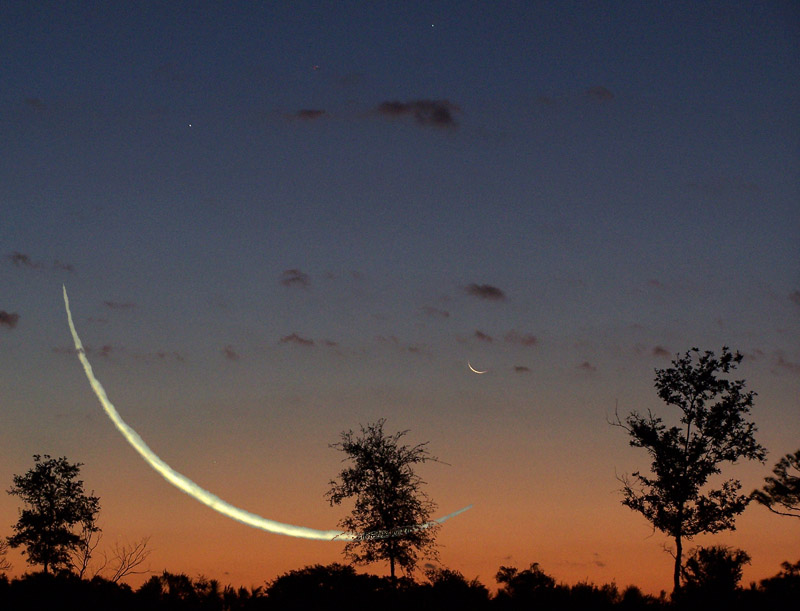
image by Howard Eskildsen, Ocala, Florida, Mercury at upper left and Spica at top.
Well, actually more than a billion. Today the Moon is far enough from Earth that you can hide it behind your thumb held out at arm’s length. The Moon is receding from Earth and has been for 4.5 b.y. That means that it was closer in the past, and appeared larger in the sky. Based on bouncing laser beams off the reflectors astronauts left on the Moon, we know that currently the Earth-Moon distance increases 3.8 cm/yr. But the Moon has apparently not moved away from the Earth at a constant rate, however, there is [http://www.sciencedirect.com/science?_ob=ArticleURL&_udi=B6WGF-4HHP57H-3&_user=10&_coverDate=01%2F31%2F2006&_rdoc=1&_fmt=&_orig=search&_sort=d&view=c&_acct=C000050221&_version=1&_urlVersion=0&_userid=10&md5=fc40ca75e253315520f4f3485e180be7
uncertainty] if the rate change happened 2-2.5 b.y. ago or more recently. In any case, at some unknown times in the past the Moon would have been much bigger in Earth’s sky. I read an estimate somewhere that its angular size was 22° (44 times bigger than now!) about 3.5 b.y. ago. Note that Howard’s enlarged Moon is only about 22 times bigger than his wide angle view image. Tides must have been much greater than now - including tides in the solid Earth, not just in the oceans. But the thing of most importance to us is that it would have been an astonishing sight. You would be able to see crater details with your naked eye, with Copernicus being about the angular size of Imbrium today. Except Copernicus and hundreds of other now conspicuous craters had not yet formed. The Moon would look very different, with other now degraded craters (Sinus Iridum, for example) being pristine, and with the redness of actively erupting lavas that were creating the maria. An evocative image of the past, Howard - the deep past.
Technical Details:
November 08, 2007, 11:14 UDT. Composite image with Kodak DX7590, and lunar closeup with Meade ETX-125, 40mm Maxview eyepiece and Nikon Coolpix 4300.
Related Links:
[1]
Yesterday's LPOD: The Flood Begins
Tomorrow's LPOD: New Perspective, Old Image
COMMENTS?
Register, Log in, and join in the comments.



